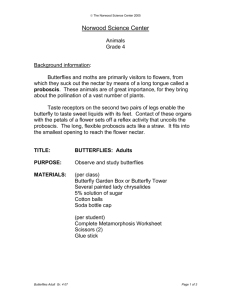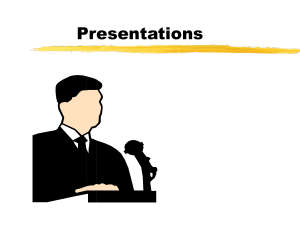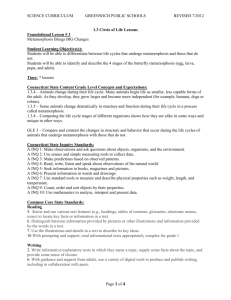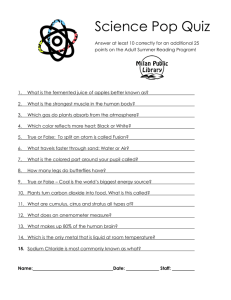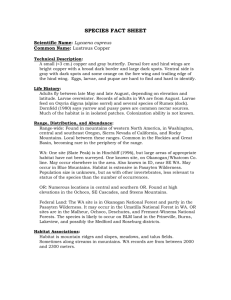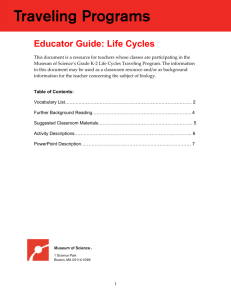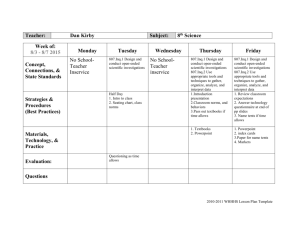Foundational Lesson # 4 - Grade 1 Transdisciplinary Learning
advertisement
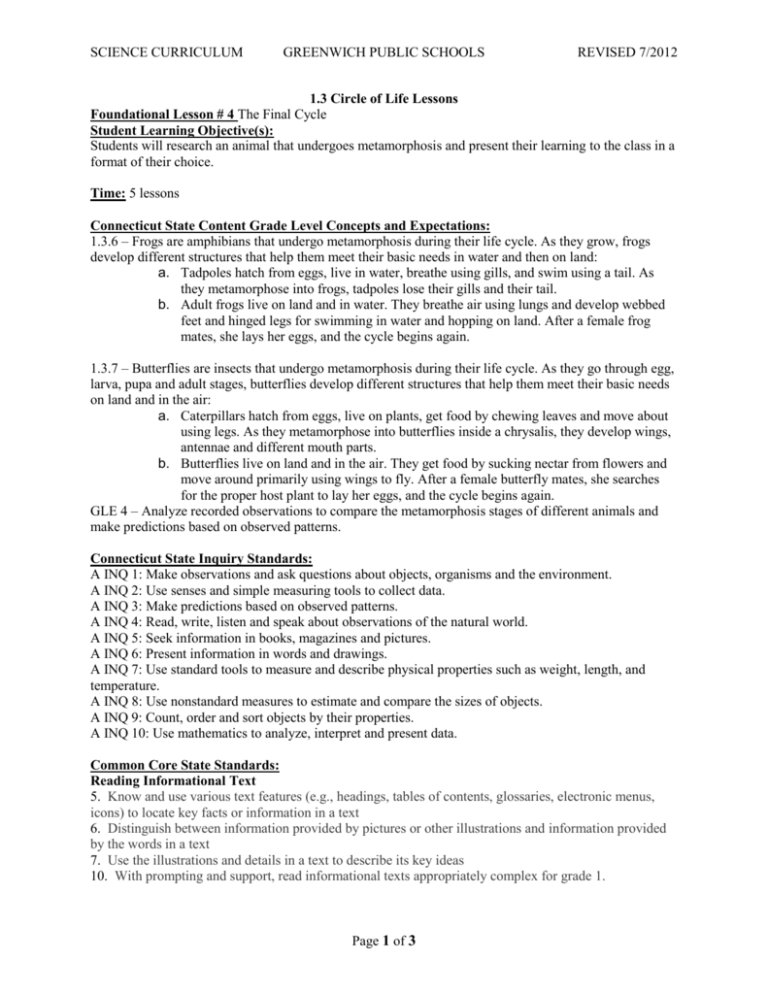
SCIENCE CURRICULUM GREENWICH PUBLIC SCHOOLS REVISED 7/2012 1.3 Circle of Life Lessons Foundational Lesson # 4 The Final Cycle Student Learning Objective(s): Students will research an animal that undergoes metamorphosis and present their learning to the class in a format of their choice. Time: 5 lessons Connecticut State Content Grade Level Concepts and Expectations: 1.3.6 – Frogs are amphibians that undergo metamorphosis during their life cycle. As they grow, frogs develop different structures that help them meet their basic needs in water and then on land: a. Tadpoles hatch from eggs, live in water, breathe using gills, and swim using a tail. As they metamorphose into frogs, tadpoles lose their gills and their tail. b. Adult frogs live on land and in water. They breathe air using lungs and develop webbed feet and hinged legs for swimming in water and hopping on land. After a female frog mates, she lays her eggs, and the cycle begins again. 1.3.7 – Butterflies are insects that undergo metamorphosis during their life cycle. As they go through egg, larva, pupa and adult stages, butterflies develop different structures that help them meet their basic needs on land and in the air: a. Caterpillars hatch from eggs, live on plants, get food by chewing leaves and move about using legs. As they metamorphose into butterflies inside a chrysalis, they develop wings, antennae and different mouth parts. b. Butterflies live on land and in the air. They get food by sucking nectar from flowers and move around primarily using wings to fly. After a female butterfly mates, she searches for the proper host plant to lay her eggs, and the cycle begins again. GLE 4 – Analyze recorded observations to compare the metamorphosis stages of different animals and make predictions based on observed patterns. Connecticut State Inquiry Standards: A INQ 1: Make observations and ask questions about objects, organisms and the environment. A INQ 2: Use senses and simple measuring tools to collect data. A INQ 3: Make predictions based on observed patterns. A INQ 4: Read, write, listen and speak about observations of the natural world. A INQ 5: Seek information in books, magazines and pictures. A INQ 6: Present information in words and drawings. A INQ 7: Use standard tools to measure and describe physical properties such as weight, length, and temperature. A INQ 8: Use nonstandard measures to estimate and compare the sizes of objects. A INQ 9: Count, order and sort objects by their properties. A INQ 10: Use mathematics to analyze, interpret and present data. Common Core State Standards: Reading Informational Text 5. Know and use various text features (e.g., headings, tables of contents, glossaries, electronic menus, icons) to locate key facts or information in a text 6. Distinguish between information provided by pictures or other illustrations and information provided by the words in a text 7. Use the illustrations and details in a text to describe its key ideas 10. With prompting and support, read informational texts appropriately complex for grade 1. Page 1 of 3 SCIENCE CURRICULUM GREENWICH PUBLIC SCHOOLS REVISED 7/2012 Writing 2. Write informative/explanatory texts in which they name a topic, supply some facts about the topic, and provide some sense of closure. 6. With guidance and support from adults, use a variety of digital tools to produce and publish writing, including in collaboration with peers. 7. Participate in shared research and writing projects (e.g., explore a number of “how-to” books on a given topic and use them to write a sequence of instructions) Speaking and Listening 5. Add drawings or other visual displays to descriptions when appropriate to clarify ideas, thoughts, and feelings. 6. Produce complete sentences when appropriate to task and situation. Language 1. Demonstrate command of the conventions of standard English grammar and usage when writing or speaking. 2. Demonstrate command of the conventions of standard English capitalization, punctuation, and spelling when writing. Learner Background: Students will be able to work independently in their Science Notebooks. At this point in the unit, students have explored through first-hand experience and through research (print and digital) life cycles, and specifically metamorphosis. Students now know that only some animals undergo metamorphosis. Students know that metamorphosis is a BIG change in which the organism changes structure and changes the way in which its basic needs are met. Teacher Background: Students continue their daily observations of the caterpillars/butterflies and record changes in their Science Notebooks. When Butterflies have grown, teachers should plan for a butterfly release. Suggested Learning Activities: (including uses of science notebook) (Students will be busy working on their Expert books in reading and writing. The following lessons should be used during science lesson time:) Watch Brainpopjr movie on Butterflies: http://www.brainpopjr.com/science/animals/butterflies/ Students reflect on new learning in science notebooks. (good breaking point) Watch Brainpopjr movie on frogs: http://www.brainpopjr.com/science/animals/frogs/ Students reflect on new learning in science notebooks. (good breaking point) Caterpillars have (hopefully) turned into butterflies. Students draw a butterfly in their Science Notebooks and label these parts. Help students identify and write the proper names for these parts of the butterflies. (antennae, proboscis, eyes, wings,) (good breaking point) When the butterflies are grown and have been in the sanctuary for a week, it is around the time to let the butterflies go outside. Discuss with the class what was learned from having them in the classroom. Discuss the importance of letting them go in their natural habitat, and how to act when we let them go. Schedule a time for the “butterfly release!” (good breaking point) Page 2 of 3 SCIENCE CURRICULUM GREENWICH PUBLIC SCHOOLS REVISED 7/2012 Students complete individual research and compile Expert Books. Using their new learning, students plan their presentations. Summative Assessment: Presentations and Expert Books will be individually assessed. All students will need time to practice their presentations before small groups of their peers. Differentiation Suggestions: Extension: Connection to math/art- Students do a study on the symmetrical nature of butterflies. Support: Some students may require small group/teacher support to prepare their presentations. Others may benefit from working with an assigned partner. Some students may need labels of the stages of a given life cycle to complete. Assessment: Summative Assessment: Students will present the information they researched. Students may present to the audience in a format of their choice (poster, skit, letter, dance, song, diagram). Each student must be assessed individually. Teachers might consider inviting parents/families in for a celebration. Materials / Resources: Capstone books: The Life Cycle of... (chicken, kangaroo, cow, grasshopper, frog, sunflower...) BrainPOP Jr. website Magnifying glasses Page 3 of 3
